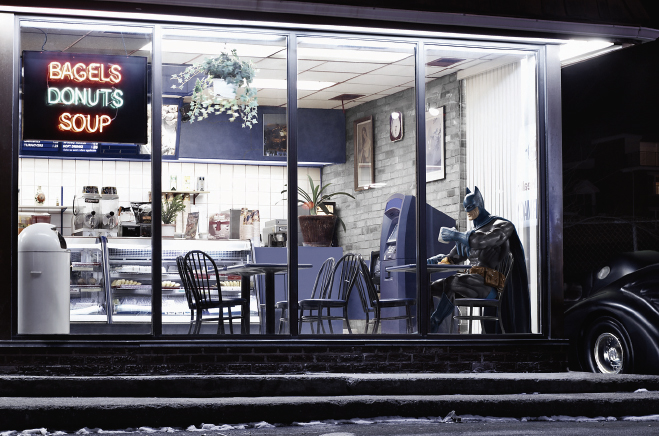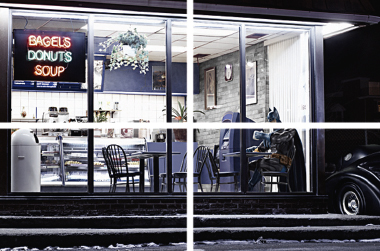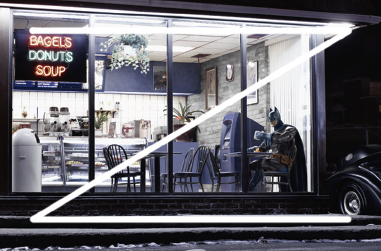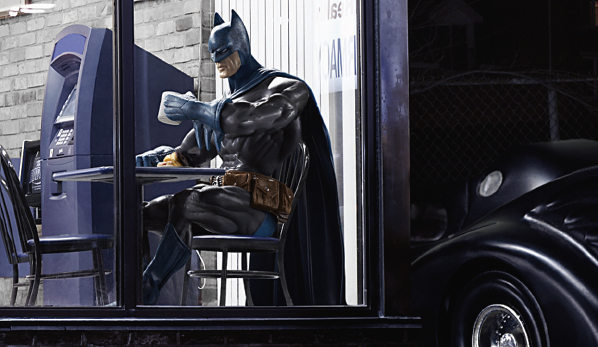Prominent Element

Next, examine the overall composition of the image. Ask yourself, “Is there one prominent element — object, person, background, writing — in the image that immediately attracts my attention?”
Answering that question is easy for a visual that showcases a single object or person, as in Figure 14.1. There, the child is the obvious prominent element. Her dark eyes, framed by her dark hair, draw the viewer to her alert, intent expression. That expression suggests her capacity to learn from all she observes. The text above and below her image reinforces this message as it cautions adults to be careful what they teach children through their own conduct.
Identifying the prominent element can be more complicated for a visual showing a whole scene or inviting many interpretations. For example, what draws your eye in Figure 14.2? Many people would first notice the neon sign on the left. The sign is bright, colorful (in a photo otherwise dominated by black and white tones), and framed neatly by the first window panel. People who read from left to right and top to bottom — including most Americans and Europeans — typically read photographs in the same way. For this reason, artists and photographers often position key elements — those they want viewers to see right away — somewhere in the upper left quadrant, drawing the viewer’s eye into the image at the upper left corner. (See Figure 14.3.)



